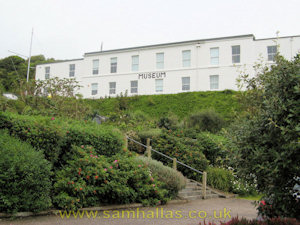

Sam Hallas' Website
The Porthcurno Telegraph Museum is housed in the former telegraph centre and training school of Cable and Wireless. It is run by the independent PK Trust with support from Cable and Wireless and BT Archives.
The museum has its own excellent web site at http://www.porthcurno.org.uk/
All the images are clickable for a larger version. Use 'Back' to return here.

|
The main museum building is on the cliff above the car park for the picturesque Porthcurno Bay. |
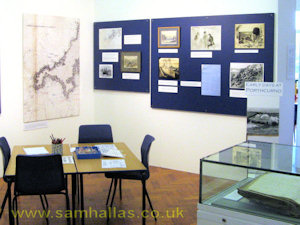 |
On the first floor is a display of photographs and items from the early days at Porthcurno. There are pictures of the trainee telegraphers.... |
... and maps of what was a global network of cables. |
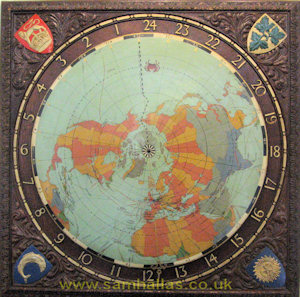 |
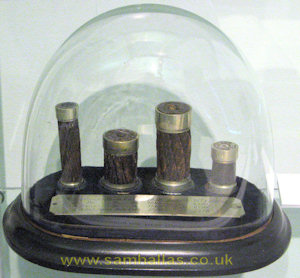 |
Here are some samples of early undersea telegraph cables from 1858 to 1870. |
The main display area is housed in the tunnels constructed during WW II to protect the vital cable station from enemy attack. |
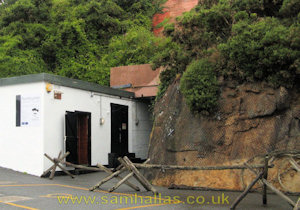 |
Here at Porthcurno they can demonstrate a spark transmitter as used in the early days of radio. Because they are in a tunnel it prevents any interference reaching the outside world. |
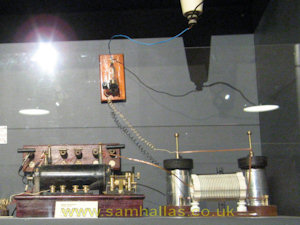 |
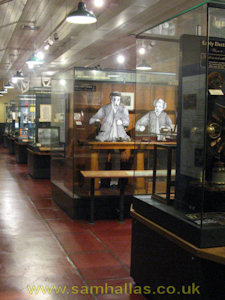 |
The main gallery houses displays of principles of operation and memorabilia of some of the earliest cable telegraphs.... |
...like this model of Brunel's massive ship, the Great Eastern, which laid the first successful transatlantic cable.... |
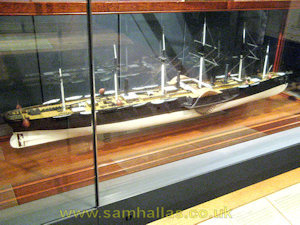 |
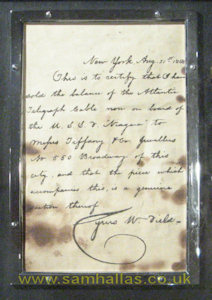 |
... and this bill of sale signed by Cyrus Field, promoter of the cable. |
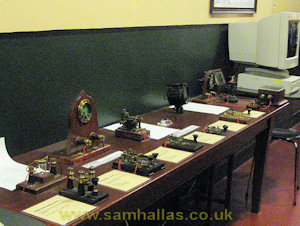 |
There is an educational area where children can learn how to send Morse code, see the current indicator and hear the sounder. |
This large gallery show the path of a telegram sent from one side of the world to the other. Each bench represents a different country and stage in the message's journey. |
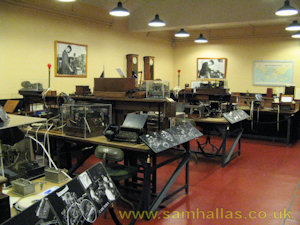 |
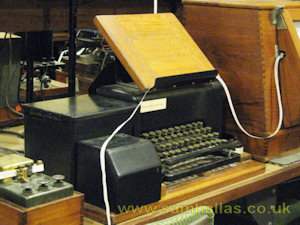 |
The message starts with the tape perforator where the operator prepares the tape for high speed transmission over the cable. |
At intermediate points on the route a piece of equipment like this, called an interpolator, detects the incoming signal, cleans its waveform and sends it onto the next point of call. |
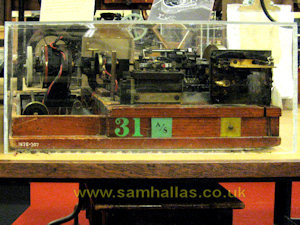 |
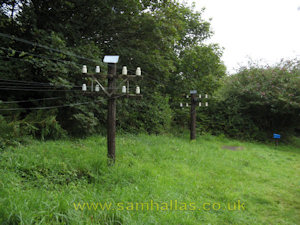 |
Outside is a typical pole route carrying the circuits down to the beach where the undersea cables are terminated. |
A yellow diamond cable marker warns ship captains not to anchor offshore to prevent damage to the cable. |
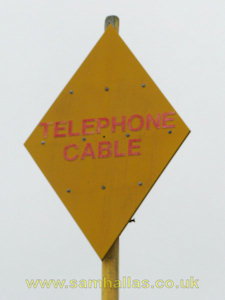 |
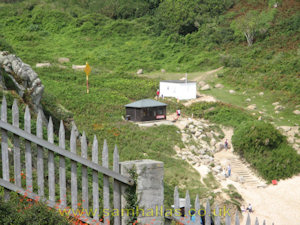 |
This is the view of the beach from the Minack Theatre on the cliff. The cable hut is the white building on the right. The other hut is the lifeguard station. The cable hut was not open when I visited, but you can see what it looks like inside on the Atlantic Cable web site page, where you'll also find an intersting article about the history of Porthcurno and the cables. |

Collection: Porthcurno Telegraph Museum. Pictures © 2007, text © 2008 Sam Hallas.